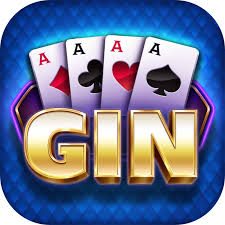How To Play Gin Rummy, is a popular two-player card game that combines elements of strategy, skill, and a bit of luck. It’s easy to learn, but mastering the game requires practice and strategic thinking. This guide will walk you through the basic rules, gameplay mechanics, and essential strategies for playing Gin Rummy.
The Basics of Gin Rummy
Objective: The primary objective in Gin Rummy is to form sets and runs with the cards in your hand, reducing your unmatched cards (known as deadwood) to the lowest possible value. The ultimate goal is to score more points than your opponent.
Players: Gin Rummy is typically played by two players.
Deck: A standard 52-card deck is used, without jokers. The cards rank from Ace (low) to King (high).
Setting Up the Game
- Dealing the Cards:
- Each player is dealt 10 cards.
- The remaining cards are placed face down to form the stockpile.
- The top card from the stockpile is placed face up next to it, creating the discard pile.
Gameplay
- Drawing a Card:
- On each turn, a player must draw one card, either from the stockpile or the discard pile.
- Forming Sets and Runs:
- Sets: Three or four cards of the same rank (e.g., 7♦, 7♣, 7♠).
- Runs: Three or more consecutive cards of the same suit (e.g., 4♠, 5♠, 6♠).
- Discarding a Card:
- After drawing a card, the player must discard one card to the discard pile.
- Knocking:
- A player can knock if their deadwood (unmatched cards) totals 10 points or fewer. The player ends their turn by placing one card face down on the discard pile and revealing their hand.
- Going Gin:
- If a player can arrange all their cards into sets and runs with no deadwood, they go gin. The player lays down their entire hand, and the opponent cannot lay off any cards.
Scoring
- Deadwood Points:
- Each unmatched card has a point value: face cards (J, Q, K) are worth 10 points, aces are worth 1 point, and numbered cards are worth their face value.
- Knocking:
- When a player knocks, they reveal their hand, and the opponent does the same. The knocker scores the difference between the opponent’s deadwood points and their own.
- Going Gin:
- A player who goes gin scores 25 bonus points plus the opponent’s deadwood points.
- Undercut:
- If the opponent’s deadwood points are equal to or less than the knocker’s, the opponent scores 25 bonus points plus the difference in deadwood points.
- Winning the Game:
- The game is usually played to a predetermined score, often 100 points. The player who reaches this score first wins.
Strategies for Success
- Minimize Deadwood Early:
- Aim to reduce your deadwood points quickly to be in a position to knock.
- Observe Your Opponent:
- Pay attention to the cards your opponent picks up and discards. This can give you clues about their hand and help you avoid giving them useful cards.
- Keep a Flexible Hand:
- Maintain flexibility by holding onto cards that can potentially form multiple sets or runs.
- Safe Discards:
- Discard high-value cards early to minimize your deadwood points. Avoid discarding cards that might help your opponent.
- Timing Your Knock:
- Knock when you have a strong hand, especially if your opponent appears close to going gin.
Conclusion
Gin Rummy is an engaging card game that combines strategic thinking, observation, and a bit of luck. By understanding the rules and practicing the strategies outlined above, you can enhance your gameplay and increase your chances of winning. So grab a deck of cards, find a partner, and start enjoying the exciting and challenging world of Gin Rummy!




